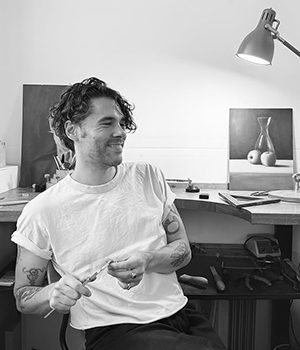Journal: Vicki Mason – Textile & Botanical Inspiration
The jewellery field has a rich history open to research and investigation. I’m constantly drawn to other jewellers’ works where plant forms are a source for inspiration or where textile processes and materials have been used. The myriad forms jewellery has taken continues to offer up fascinating insights into an era’s cultural proclivities and fashions. Botanical forms have been used in jewellery throughout the ages by all cultures and the use of these forms in adornment reveals our ongoing fascination with nature as subject and our universal desire to remain connected to the natural world. How plants are depicted and the context they are situated in mirrors not only the styles and zeitgeist of the particular time but how nature itself is viewed.

Sumerian court jewellery, c 2500BC

Cook Island chief
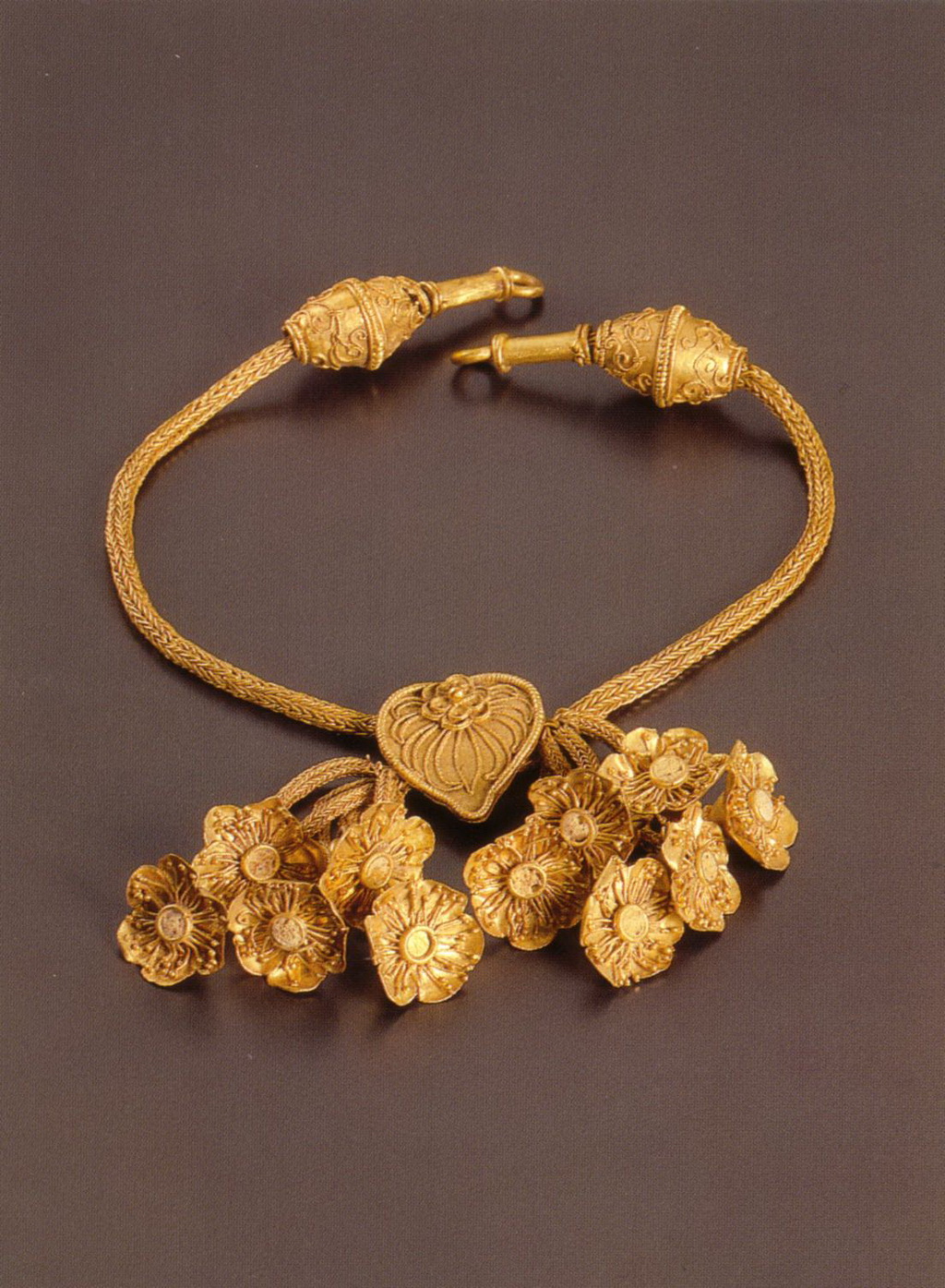
Necklace, gold, Greek 4th C BC
My recent period of study enabled me the opportunity to investigate how and why within the European jewellery making tradition in Australia, flora has been used. Of the few works that remain from the colonial period for example, there are magnificent gold jewels. These works reveal a country gripped by gold fever with a bent also for collecting and showing off the newly discovered Australian native plants.
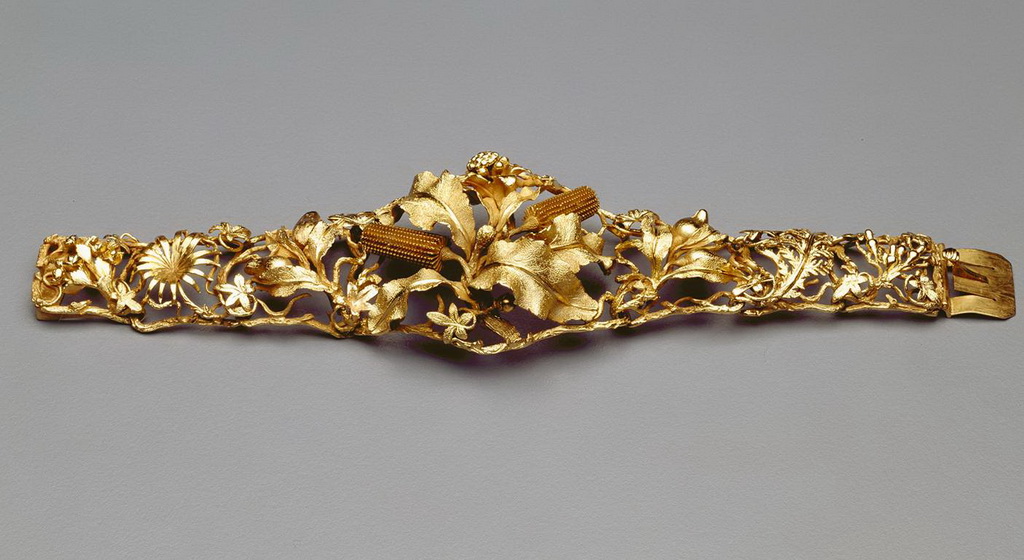
Hogarth, Erichsen and Co, (attributed to), gold, c 1860

Hogarth Erichsen and Co brooch, gold, gold flecked quartz, c 1858
The forms these high colonial jewels took piqued my interest in jewellery forms such as the spray, bouquet, and sprig and the origins/types these sorts of works have taken throughout history. The various pieces below are mainly from the Victorian period, a time when the enthusiasm for botany was rife.
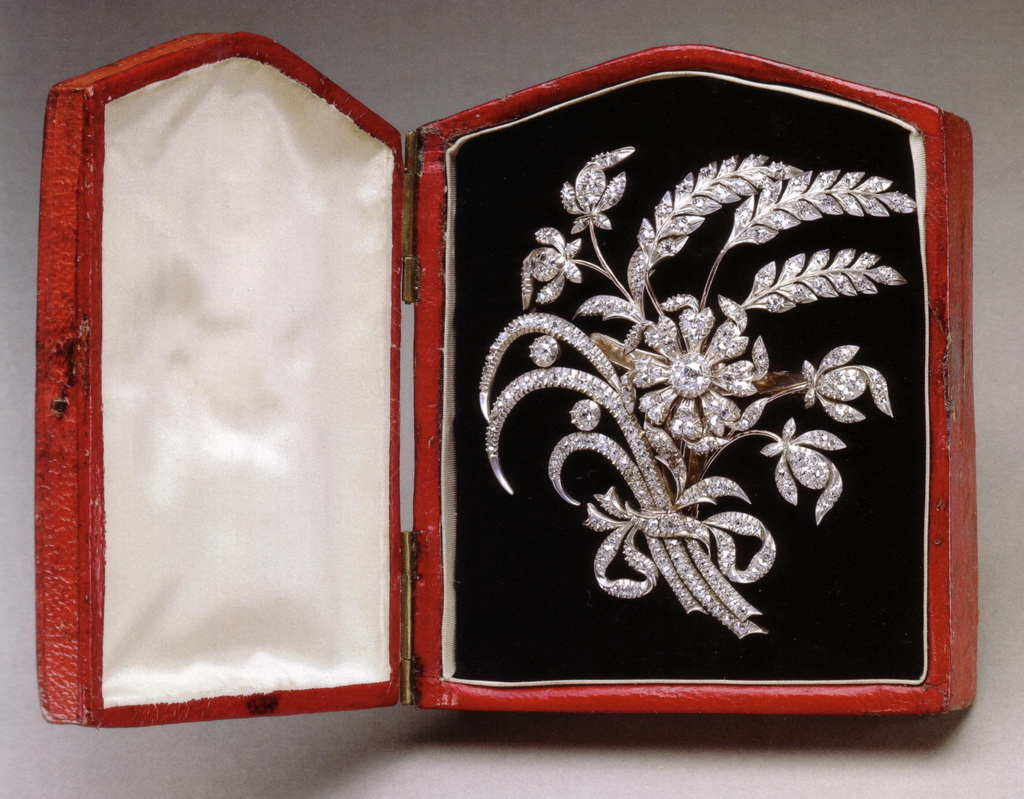
Maker unknown, Aigrette, c 1860
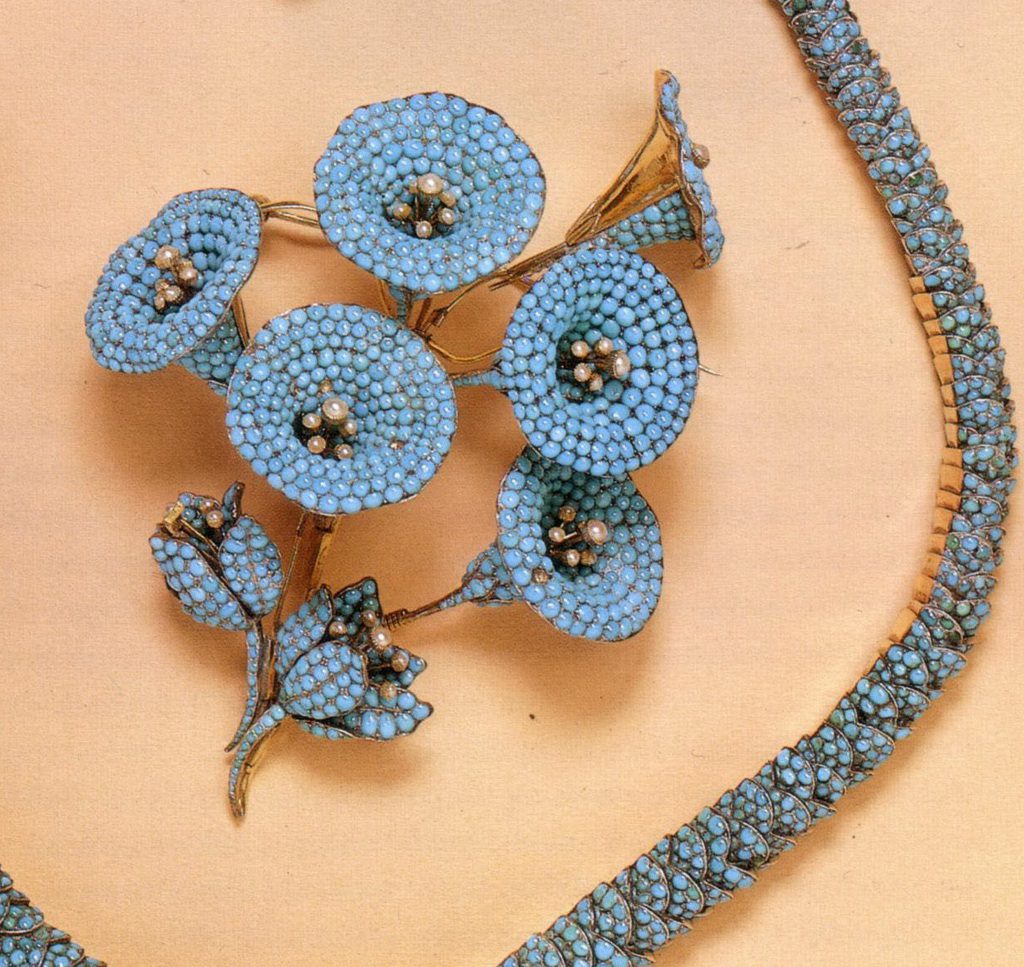
Convolvulus brooch, turquoise and pearl, c 1845 -50
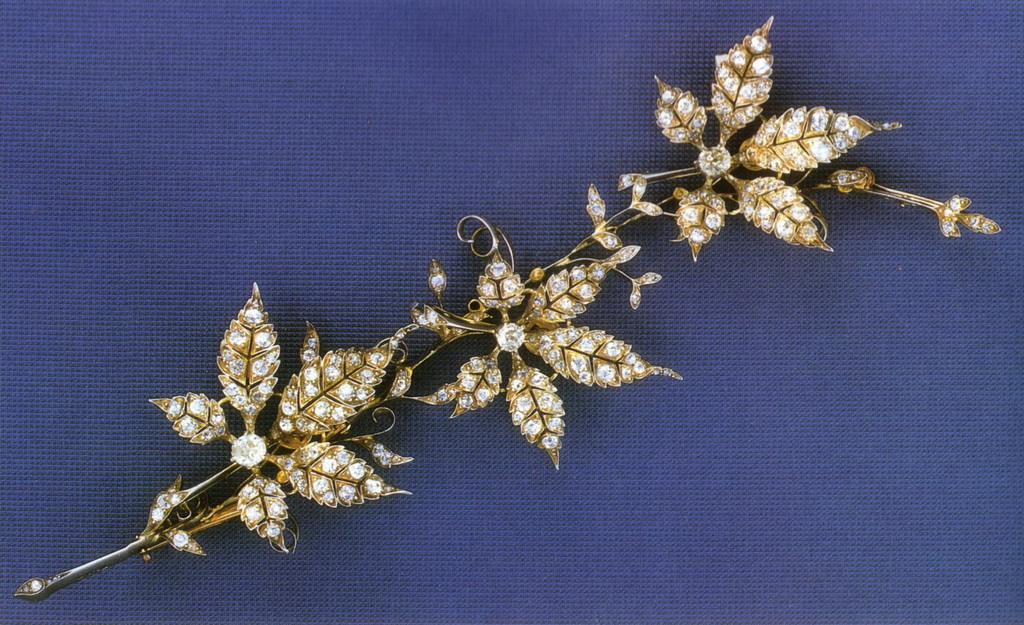
Corsage ornament (fragment), silver on gold, diamonds, c 1890
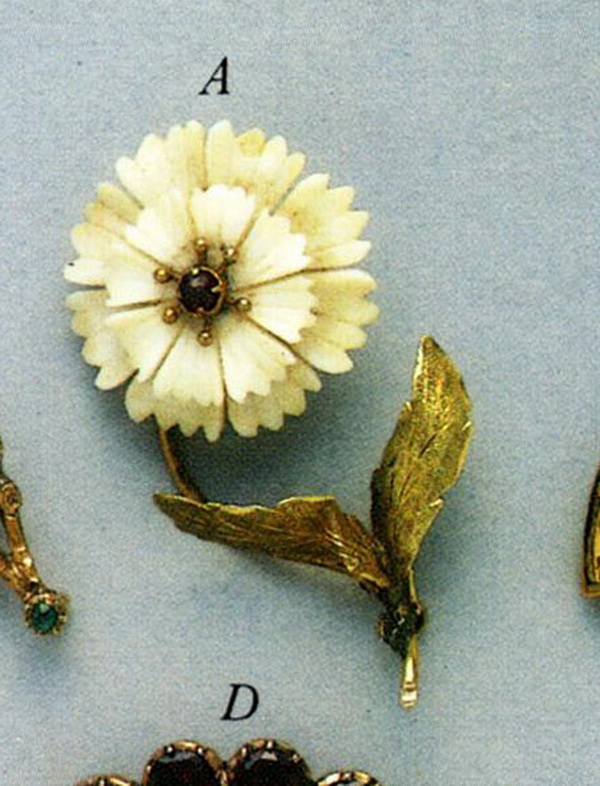
Carnation spray brooch with carved shell blossom, gold and garnet, c 1840
The tradition of utilising textile techniques and processes dates back within the studio jewellery tradition to the 1970s. Jewellers such as Marion Herbst, Arline Fisch, Lam de Wolf, Marjorie Schick, amongst many others, were forerunners in bringing textile materials and processes into the craft/art jeweller’s repertoire for many and varied reasons. The texture and structure of textiles and fabric became important as opposed to ornamentation and work made at this time often referred to folds and creases to give a tactile effect, an effect to which jewellery is obviously attuned.
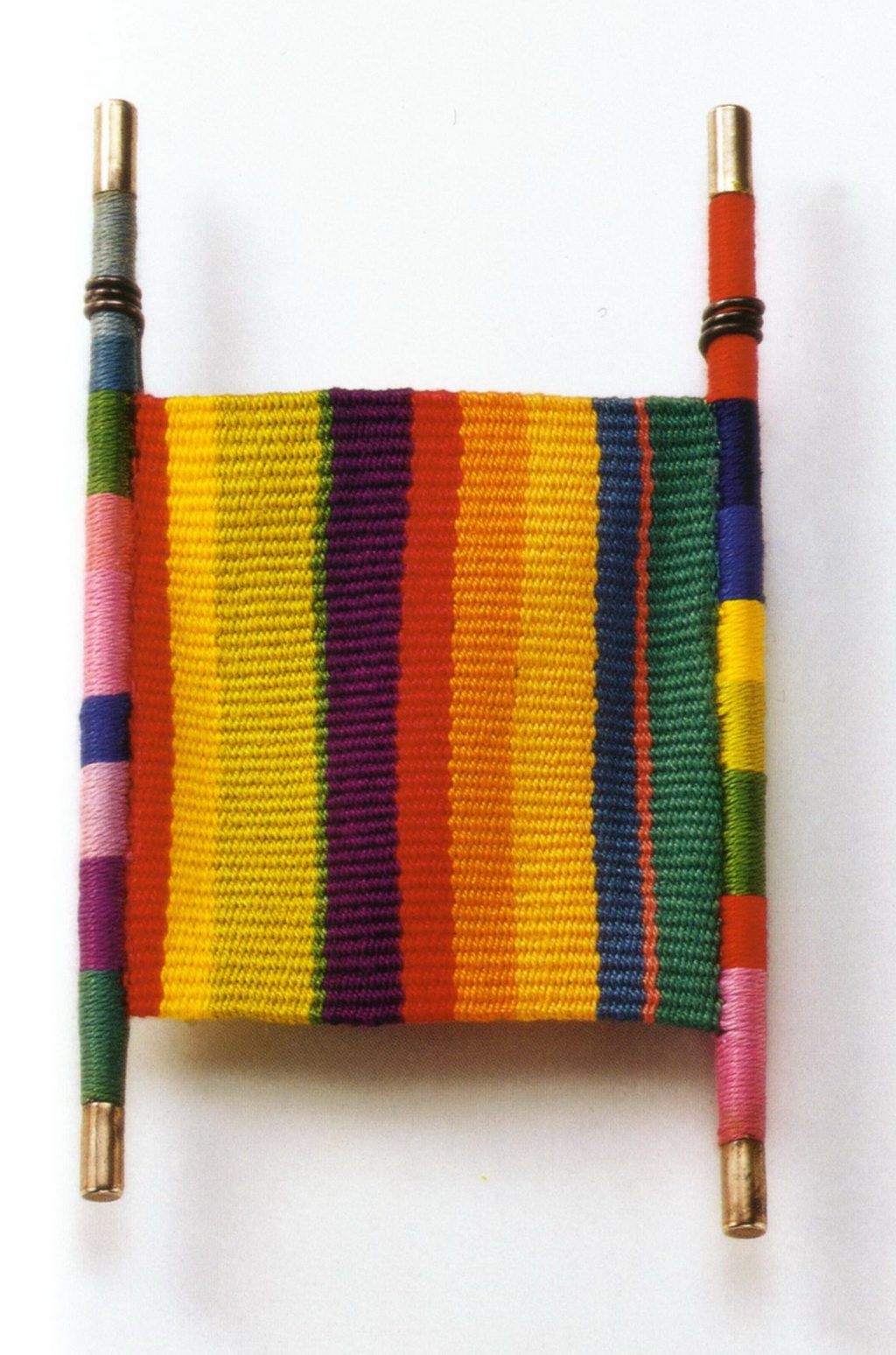
Marion Herbst
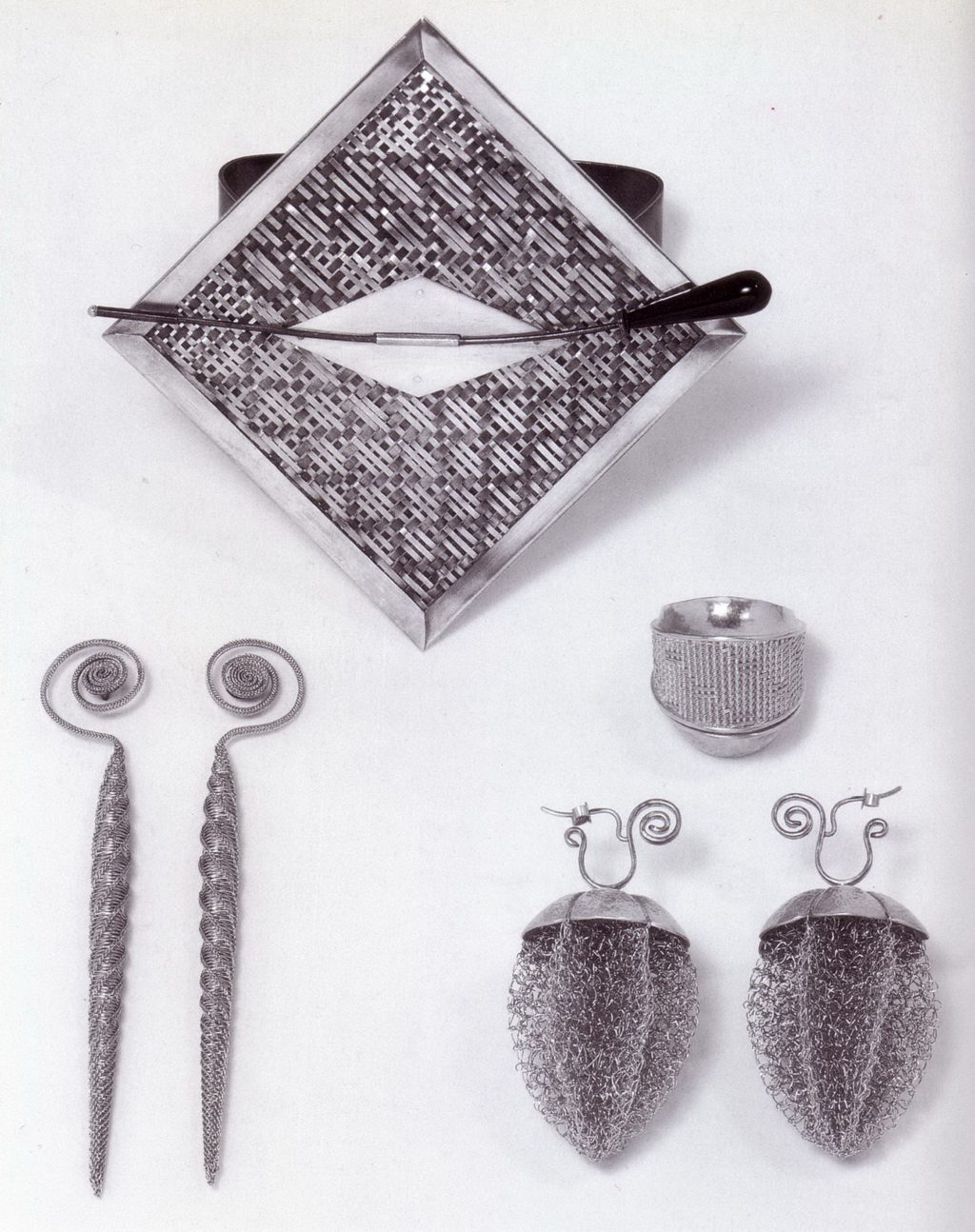
Arline Fisch

Lam De Wolf
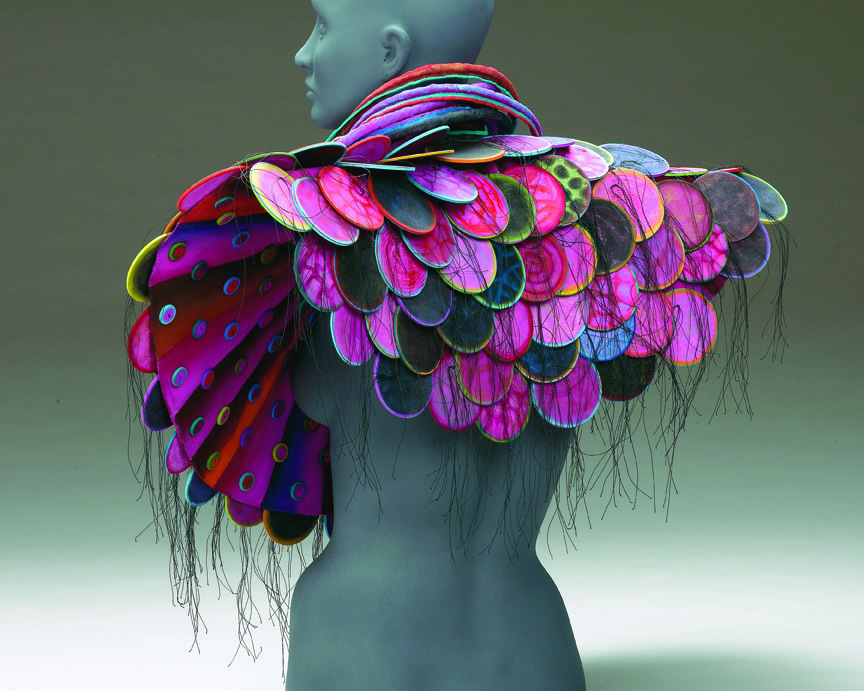
Marjorie Schick
References
Charlotte Gere, Judy Rudoe, Jewellery in the Age of Queen Victoria: A Mirror to the World, 2011
Eva Czernis-Ryl, Australian gold & silver. 1851 – 1900, 1995
Michael Koch, The Belle Epoque of French Jewellery, 1850-1910: Jewellery Making in Paris, 1850-1910, 1991
Schmuckmuseum Pforzheim, Modern jewellery, 1960-1998, 1999
Shirley Bury, Jewellery 1879 – 1910, The International Era, Vol 1 & 2, 1991
Susanne Küchler, Graeme Were, Glenn Jowitt, Pacific Pattern, 2005

